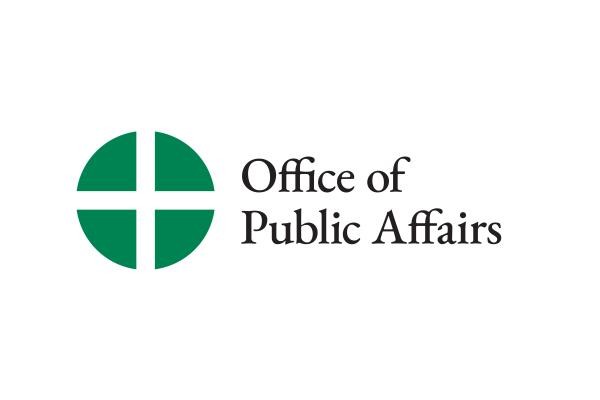Dialogue Statement, Vocations Topic Of Catholic-Oriental Orthodox Church Meeting
WASHINGTON—The new agreed statement of the international dialogue between the Catholic Church and the Oriental Orthodox Churches and the fostering of vocations were the main topics of discussion at the 2009 meeting of the national dialogue between the two communions.
WASHINGTON—The new agreed statement of the international dialogue between the Catholic Church and the Oriental Orthodox Churches and the fostering of vocations were the main topics of discussion at the 2009 meeting of the national dialogue between the two communions.
The meeting took place September 30-October 1 at the Passionist Spiritual Center in Riverdale, New York, and was co-chaired by Bishop Howard Hubbard of Albany, New York , and The Right Reverend Chor-Episcopos John Meno of the Syrian Orthodox Church of Antioch.
In the first session, Paulist Father Ronald G. Roberson, Associate Director of the USCCB's Secretariat for Ecumenical and Interreligious Affairs and a member of the international Oriental Orthodox-Roman Catholic dialogue, presented the new international agreed text, entitled "Nature, Constitution and Mission of the Church." The document outlines broad areas of consensus on such topics as the Church as communion, the attributes of the Church, the bishops and apostolic succession, the relationship between synodality and primacy, the nature of councils, and the mission of the Church. It also identifies points that need further study. Members welcomed this step forward in our relationship and commented on the contents and significance of the document.
On October 1, Father Luke Sweeney, Director of Vocations of the Archdiocese of New York, spoke about fostering of vocations from a Catholic perspective. He outlined eight essential facets of any effective vocations program. These include the roles of the bishop, prayer programs, the family, the vocation director, priests themselves,seminarians and seminary communities, and lay auxiliary groups. He also noted a need to develop an image of the priesthood that emphasizesheroism and sacrifice.
Father Stepanos Doudoukjian, director of vocations at St. NersessArmenian seminary in New Rochelle, New York, spoke about vocation workin his church. The Eastern diocese of the Armenian Church is placing emphasis on developing vocations from the United States, and emphasizesthe role of summer youth programs. Archbishop Khajag Barsamian, primate of the Eastern diocese, has declared this to be a year of vocations, and a number of programs in the parishes are in progress.
Father Jacob Ghaly, a representative of the Coptic Orthodox Church, spoke about the promotion of vocations in his church. He emphasized that calls to the priesthood always come from the local communities who ask men to consider ordination; men do not apply to be ordained on their own initiative. More vocations are now coming from the United States but seminarians receive their education in Egypt. Metropolitan Cyril Aphrem Karim, head of the Syrian Orthodox Archdiocese of the Eastern United States, added that the Syrian Orthodox priests in this country are being trained to foster vocations in their own communities. Seminarians may study at St. Vladimir's Orthodox Seminary, but they also spend time in Syria to understand how the church functions in its homeland.
One session of the dialogue was devoted to an exchange of information about recent major events in the lives of the two churches. Reports were heard from each of the Oriental Orthodox Churches, and Bishop Hubbard shared information with the group regarding Catholic-Jewish relations, the status of the Society of Pope Pius X andthe new papal encyclical Caritas in Veritate.
Benedictine Father Columba Stewart explained his work as Director of the Hill Museum and Manuscript Library at St. John's Benedictine Abbey in Collegeville, Minnesota. Since 1965, the library has photographed about 110,000 complete manuscripts, and since 2003, it hasdigitalized more than 16,000 Syriac, Christian Arabic and Armenian manuscripts in Syria, Lebanon, and Turkey. Also on September 30, members gathered in chapel for Evening Prayer in the Latin rite in celebration of the feast of St. Jerome.
The Oriental Orthodox-Roman Catholic Consultation was establishedin 1978, and is sponsored jointly by the Bishops' Committee for Ecumenical and Interreligious Affairs and the Standing Conference of Oriental Orthodox Churches America, which includes representatives fromthe Armenian (Catholicossate of Etchmiadzin), Coptic, Ethiopian, and Syrian Orthodox Churches. The agreed statements it has produced over the years along with press releases about the dialogue are posted on the USCCB website at: https://www.usccb.org/seia/oriental_orthodox.shtml The next consultation is slated for September 20-21, 2010, in New York City. The dialogue members plan to discuss ways of responding to proselytism and the situation in the Holy Land, including the final status of Jerusalem.


